Update July 6, 2020
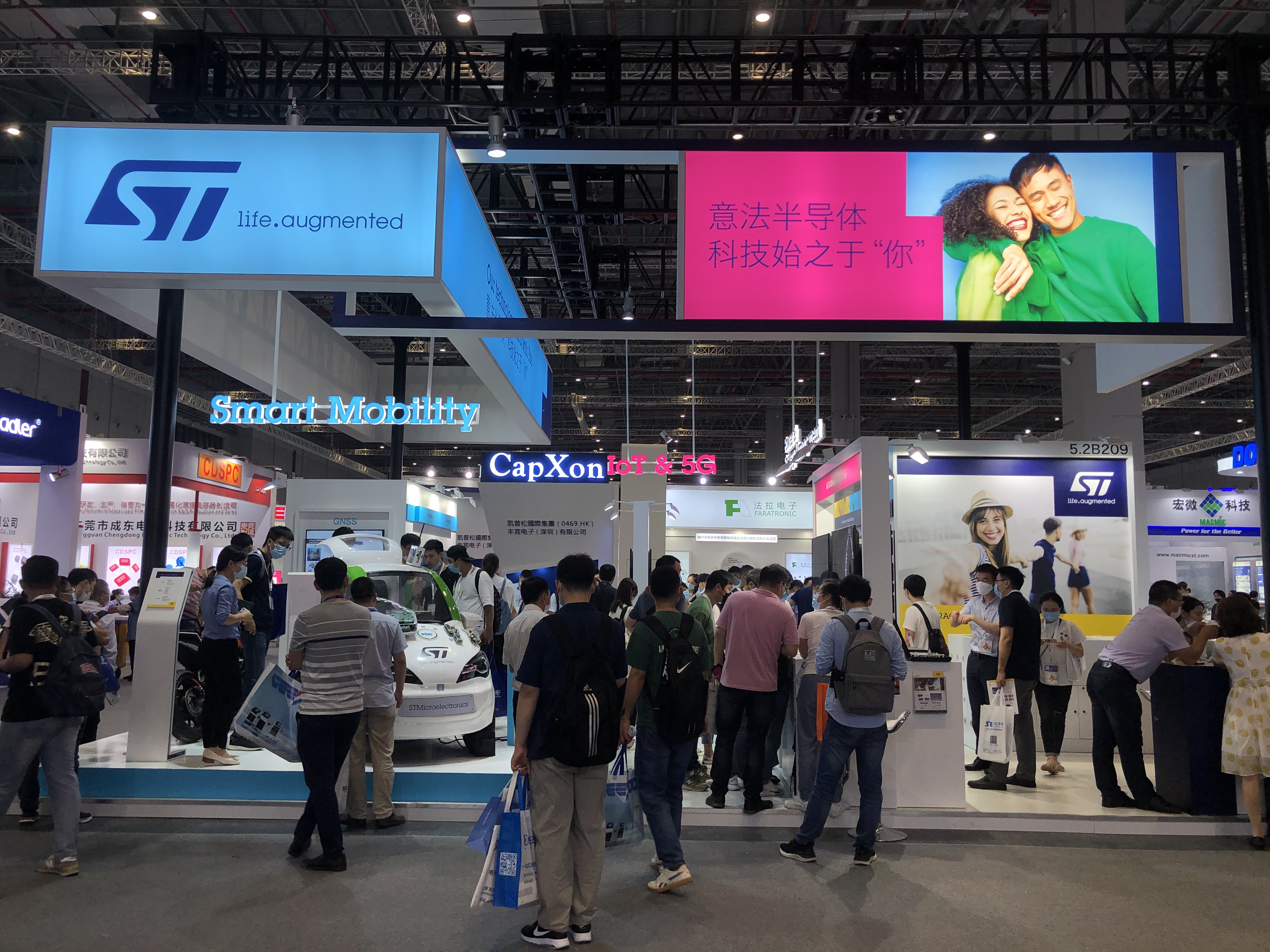
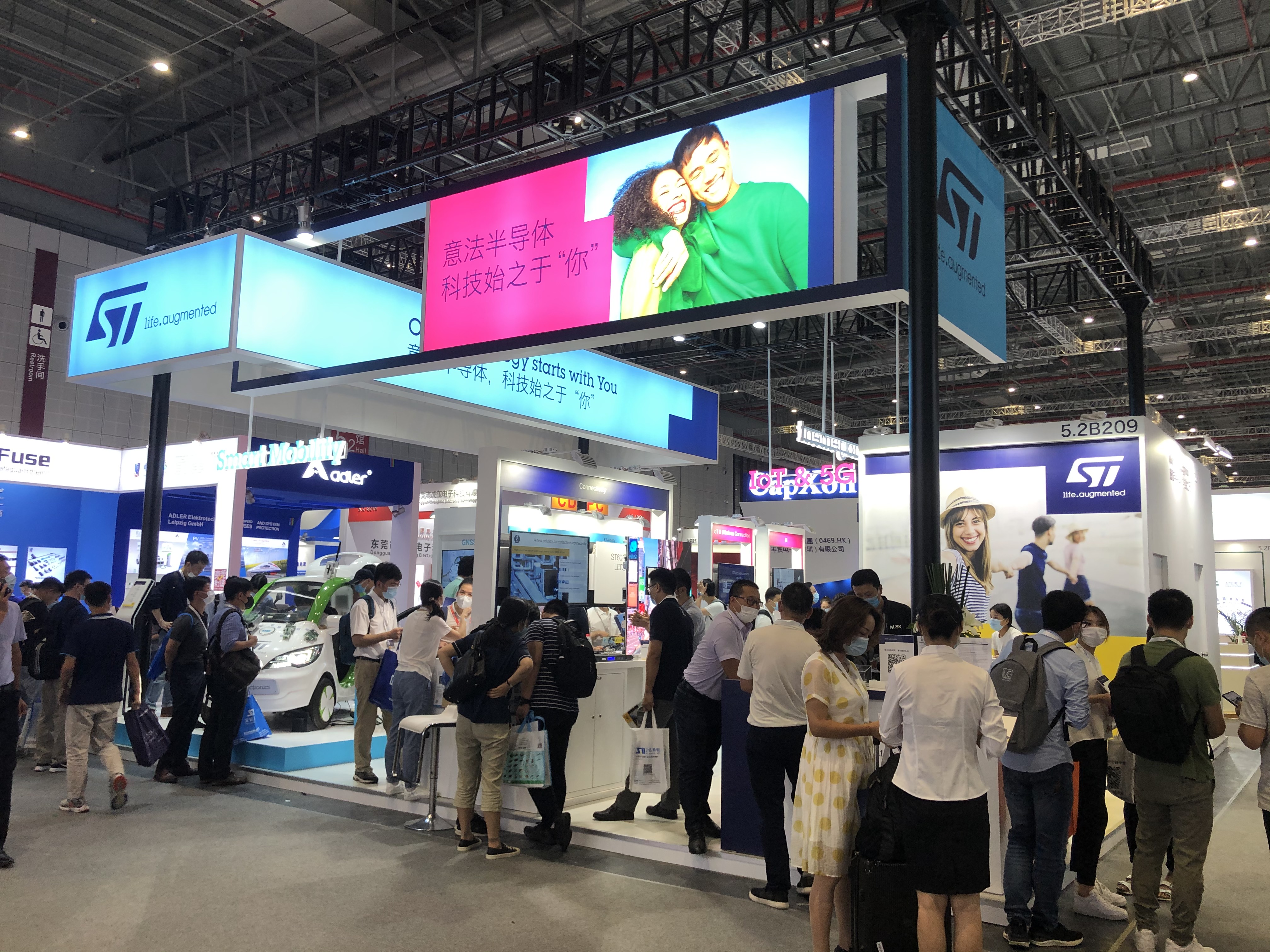
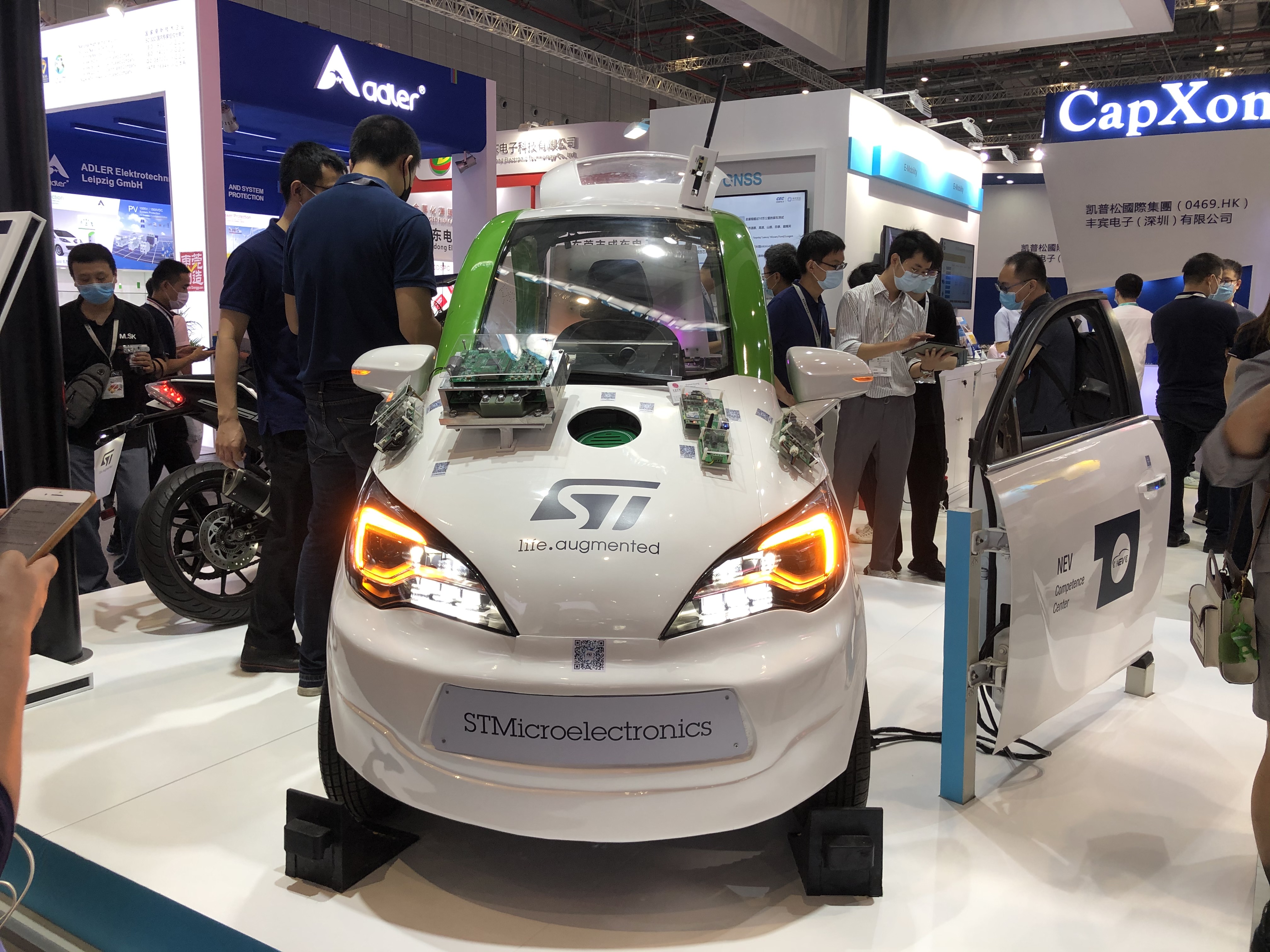

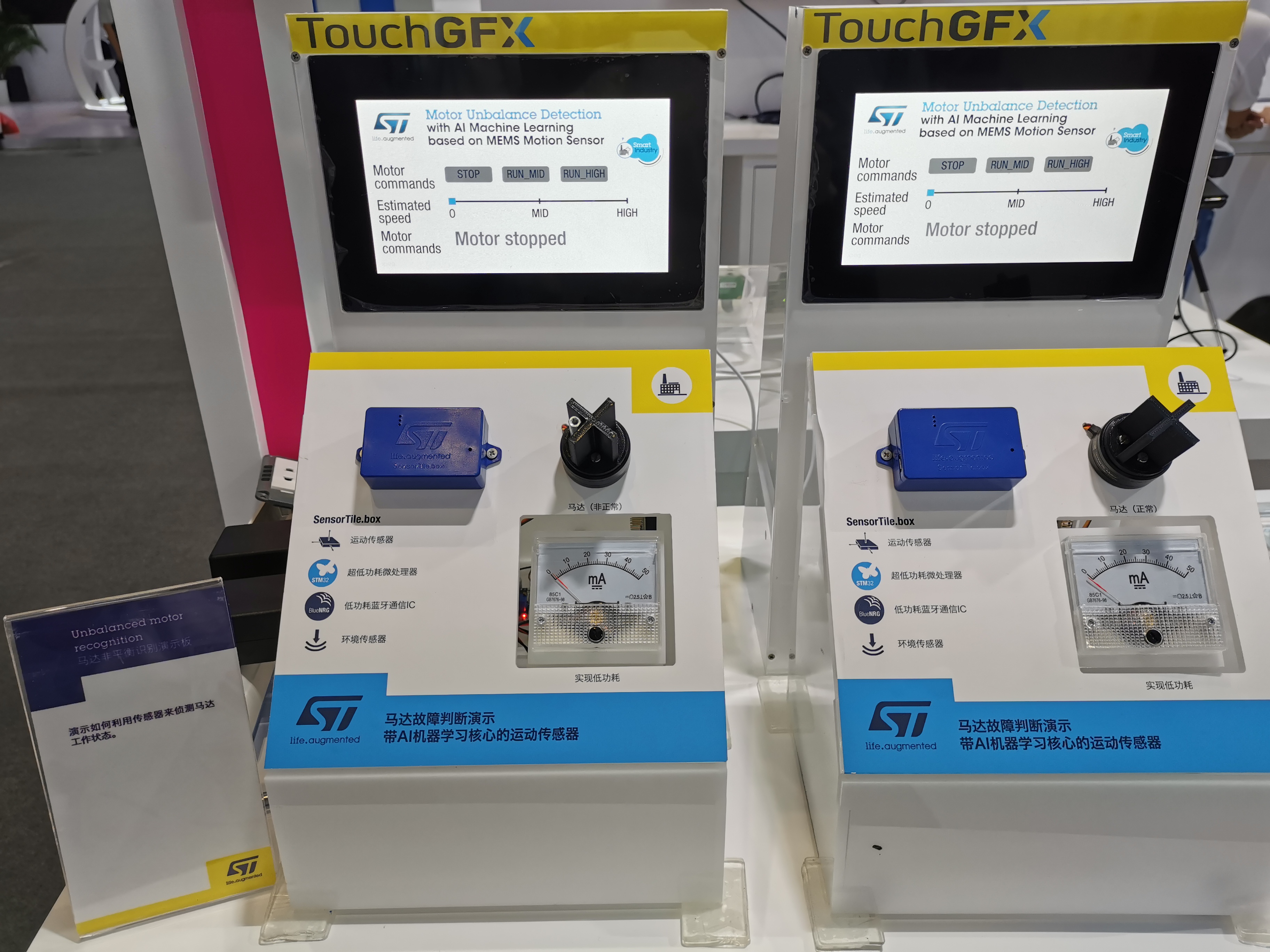
Original text, July 3, 2020
To improve the accessibility of our content, please find the audio version of this blog post.
Electronica China 2020 is opening its doors today and ST has a booth with more than 100 demos around smart mobility, power, and energy management, as well as IoT and 5G, among others. We will update this blog post with photos of the event, but in the meantime, we wanted to focus on three specific presentations: a demo car, a contactless module for LED displays, and a predictive maintenance solution that runs its machine-learning algorithm on the inertial sensor. And to further explain our work, products, and vision around new energy vehicles, we will also participate in the International Automotive Electronics and Electric Vehicle Innovation Forum. Ultimately, Electronica China enables us to showcase a strategy for the Asian markets that focuses on applications first, rather than vague concepts. It’s all about what our partners and customers can do for their end-users.
Electronica China 2020: 3 of the 31 Demos in the ST Car
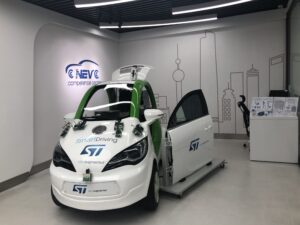
The ST demo car embarks a total of 31 demos showcasing power management, vehicle control units, body control modules, connectivity, and so much more. In this blog post, we’ll focus on three particular features: traction inverter, battery management, and OLED rear lighting. Building on the L9963 that our Chinese teams helped design, the vehicle is a great example of how such a device can vastly improve the battery management thanks to precise measurements and fast operations, among others. The ST car will also display our adaptive front lighting solution and our OLED tail lamps that offer a wide range of customizable options to help carmakers offer a safer experience and distinguish themselves. Indeed, thanks to massive optimizations, one CAN bus on our PowerPC MCUs can support up to 4096-pixel LED panels, greatly facilitating developments and enabling teams to select more cost-effective options with fewer interfaces.
We will also highlight a reference design for the traction inverter of the ST car. Our Silicon Carbide devices are already present in vehicles currently on the road and they did enable companies to come up with smaller and more cost-effective modules, thus contributing to a decrease in the sticker price. The ST reference for traction inverters includes our SiC MOSFETs as well as gate drivers, and the PowerPC processor, among many other things. We even offer a firmware that runs a resolver that helps determine the position of the motor. Traditionally, such a feature requires a dedicated IC. However, with our firmware, teams get to enjoy the same feature by simply using the processing power available. This comprehensive design ensures smaller teams can come up with proofs-of-concepts faster thanks to the efficiency behind the reference design.
Electronica China 2020: The ST60 Demo for Contactless Gigabit Ethernet for LED Display Walls
Another demo at our Electronica China booth will be using an ST60 contactless transceiver inside modules developed by our Chinese partner EPS. Put simply, a PC sends a movie over HDMI to a NovaStar video controller, which then sends the signal to the EPS Gigabit Ethernet module that houses an Ethernet connector, an Ethernet PHY, and the ST60. This system can then send the feed to another EPS box attached to a panel to provide contactless transmission of high-resolution videos, even through plastic, wood, or glass. Hence, driving large LED display walls became a lot simpler since the solution cuts down on a lot of cables, which subsequently reduces maintenance costs and increases reliability.
The application on display supports a bandwidth of 1.25 Gbit/s but the ST60 itself can climb as high as 6.25 Gbit/s, offering low power, point-to-point, and low latency connectivity of up to a few centimeters. The demo is also unique because there are very few competitors today that take advantage of the 60 GHz unlicensed V-Band, thus making this Electronica China 2020 special. The ST booth will offer attendees the opportunity to see real-world applications and commercially available products using ST60, such as the Gigabit Ethernet module from EPS. Our Chinese partner released two versions of its ST60 contactless ethernet module, the SK202 with horn antennas for board-to-board operations with horizontal connections, and the SK201 with a patch antenna for vertical communication.
Electronica China 2020: Predictive Maintenance Inside the LSM6DSOX Sensor
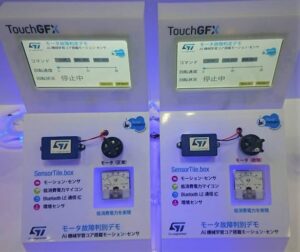
The last demo we want to highlight is a predictive maintenance system capable of running AI-based algorithms inside the machine learning core of the LSM6DSOX. The MEMS can detect abnormals motor behavior and send an alert to allow companies to service parts before they actually break down and cause greater financial repercussions. We are offering a step-by-step guide on our community to ensure anyone can reproduce this experiment at home.
Our presentation showcases a SensorTile.box connected to a NUCLEO-F401RE by Bluetooth LE and a seven-inch display from EDT, a member of the ST Partner Program we recently interviewed to better understand how they relied on STM32 and TouchGFX. Traditionally, the MCU on the Nucleo board would have to process the raw data from the sensors and run algorithms, which would demand about 30 mA. By processing the data on the MEMS, the system can stay in sleep mode longer, the MEMS can run the machine learning algorithm with only 1 mA, and it only wakes the system when it detects an anomaly.
The step-by-step guide also tackles data collection and cleanup, which is a particularly difficult and time-consuming issue. Before the machine learning core can detect an anomaly, it must learn what it looks like. We thus cover, in the step-by-step guide, a way to log data by using the accelerometer. We also show how to use it in our Unico GUI to convert it into something that the machine learning core can process.
